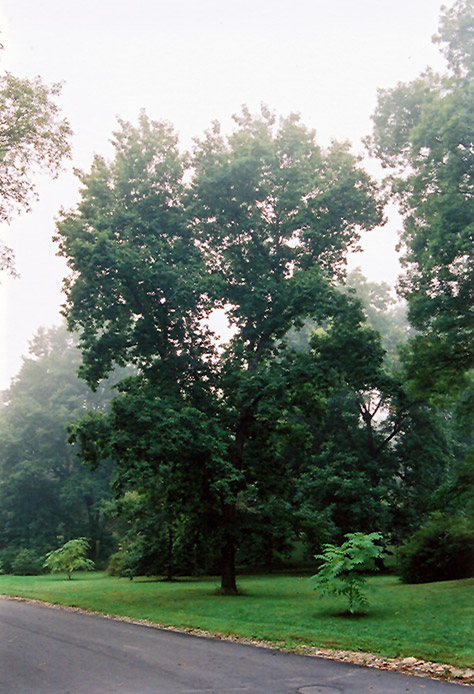Plant Finder
Height: 70 feet
Spread: 40 feet
Sunlight:
![]()
![]()
Hardiness Zone: 3a
Other Names: Swamp Hickory
Description:
Considered by many to be the hardiest hickory, this is a massively tall and narrow tree, best used for natural forests and larger landscapes; fall color can be spectacular; large nuts are very bitter and can be messy in fall
Ornamental Features
Bitternut Hickory has dark green deciduous foliage on a tree with a columnar habit of growth. The large compound leaves turn an outstanding gold in the fall. It produces brown nuts in early fall. The fruit can be messy if allowed to drop on the lawn or walkways, and may require occasional clean-up. The furrowed gray bark adds an interesting dimension to the landscape.
Landscape Attributes
Bitternut Hickory is a deciduous tree with a narrowly upright and columnar growth habit. Its average texture blends into the landscape, but can be balanced by one or two finer or coarser trees or shrubs for an effective composition.
This is a high maintenance tree that will require regular care and upkeep, and is best pruned in late winter once the threat of extreme cold has passed. Gardeners should be aware of the following characteristic(s) that may warrant special consideration;
- Messy
Bitternut Hickory is recommended for the following landscape applications;
- Shade
- Naturalizing And Woodland Gardens
Planting & Growing
Bitternut Hickory will grow to be about 70 feet tall at maturity, with a spread of 40 feet. It has a high canopy of foliage that sits well above the ground, and should not be planted underneath power lines. As it matures, the lower branches of this tree can be strategically removed to create a high enough canopy to support unobstructed human traffic underneath. It grows at a fast rate, and under ideal conditions can be expected to live to a ripe old age of 120 years or more; think of this as a heritage tree for future generations!
This tree does best in full sun to partial shade. It is very adaptable to both dry and moist locations, and should do just fine under average home landscape conditions. It is not particular as to soil pH, but grows best in rich soils. It is somewhat tolerant of urban pollution. This species is native to parts of North America.

